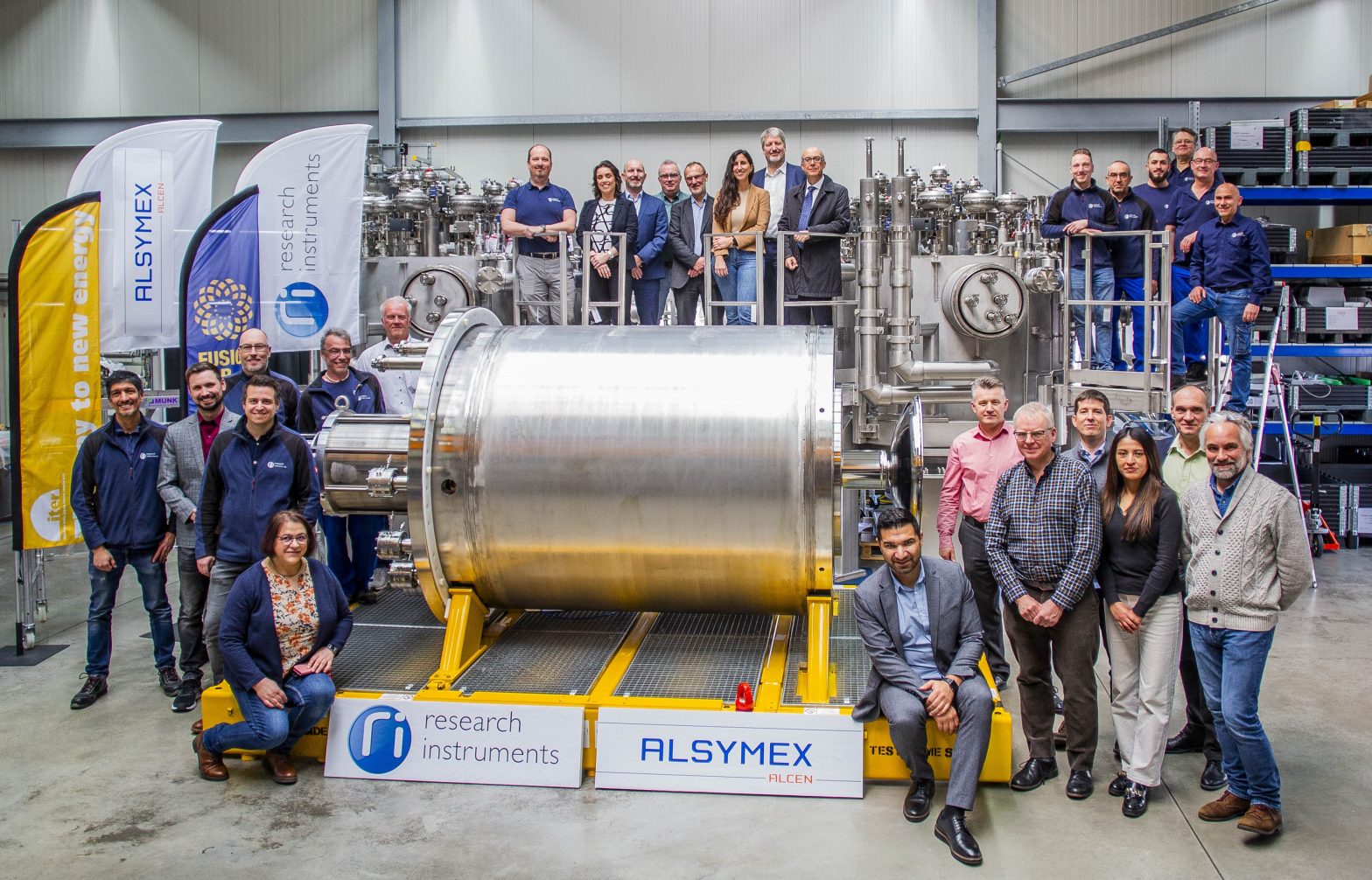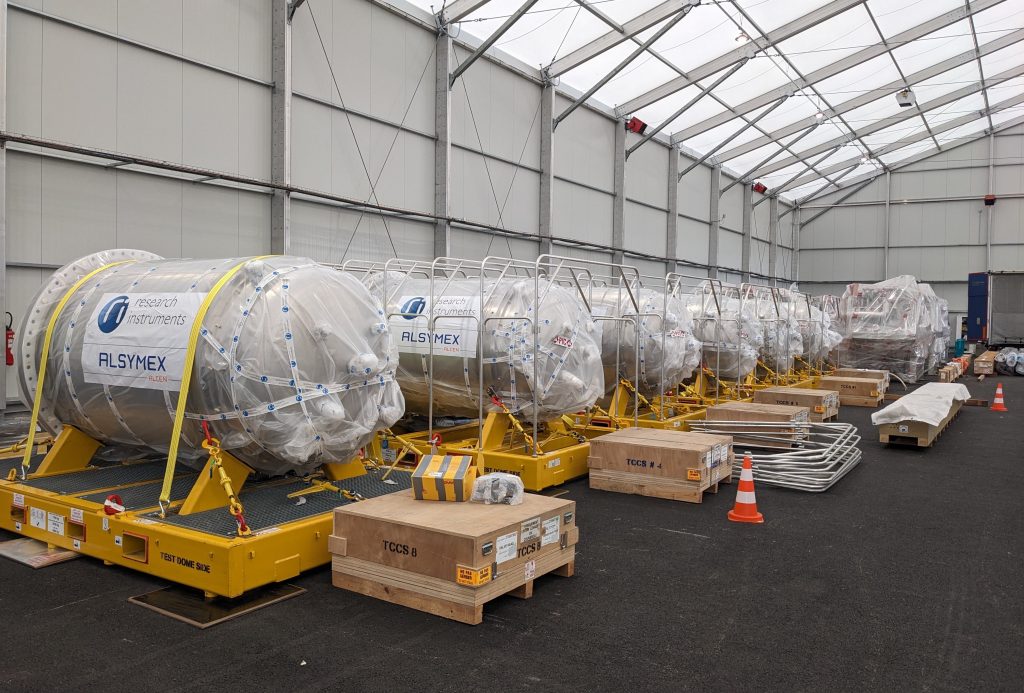Europe’s eight cryopumps are ready for ITER

Group picture with the teams of Research Instruments, Alsymex, ITER Organization and Fusion for Energy next to the eight cryopump. March 2025. ©RI
Fusion for Energy (F4E) has completed another major European contribution to ITER with the delivery of the eight torus and cryostat cryopumps. The components, a key part of the reactor’s fuel cycle and vacuum systems, were manufactured in collaboration with Research Instruments (RI) and Alsymex.
Last week, the teams came together at the workshop of RI in Germany to celebrate this achievement, confirmed a few days earlier by the successful factory acceptance tests. The ceremony took place next to the eighth and final cryopump, the culminating symbol of a project that started almost a decade ago. Building on a pre-production unit, series fabrication began in 2020 and peaked with the first deliveries last year.
The last cryopump will travel this week to ITER. It will only be the final stretch of a journey that has taken it to various workshops across Europe, specialising in advanced manufacturing processes. For instance, the subcontractor Leering shaped the stainless-steel thermal shields through hydroforming and Pro-beam carried out electron beam welding on the plates. Later, RI assembled all the parts, carefully fitting in the cryogenic pipes and installing the casing and valve assembly produced by Alsymex.
“The cryopumps required a flawless production chain to secure the tight tolerances all through machining, welding and assembly. Thanks to a smooth coordination, we managed to meet the standards and even solve some unforeseen issues on the spot,” explains Francina Canadell, Project Manager at F4E.
Indeed, the unprecedented requirements for ITER’s cryopumps, in terms of nuclear safety or pumping power, raised the benchmark of this technology, which is used in other high-vacuum applications. At ITER, the cryopumps will ensure the low-density conditions inside the massive device, to allow the fusion reaction to happen. Out of the eight delivered by F4E, two will serve the cryostat and six will be connected to the vacuum vessel through the divertor. The cryopumps will trap gas particles using cryopanels, cooled at ultra-low temperatures of about 4K (-269°C), and later release them to re-process the unburned fuel.

The Managing Director of RI, Michael Pekeler, and the Sales Director of Alsymex, Eric Giguet, expressed their satisfaction: “This success shows the capability of the RI-Alsymex consortium to manufacture, assemble, test and deliver complex, safety-relevant, large components with the highest quality standards. Thanks to a trustful collaboration with F4E, ITER Organization and our sub-contractors, we mastered every step, from precise machining and metrology to thousands of welds and extensive vacuum testing.”
In the next years, ITER Organization will test the cryopumps under real cryogenic conditions by connecting them to the powerful cryoplant circuits.